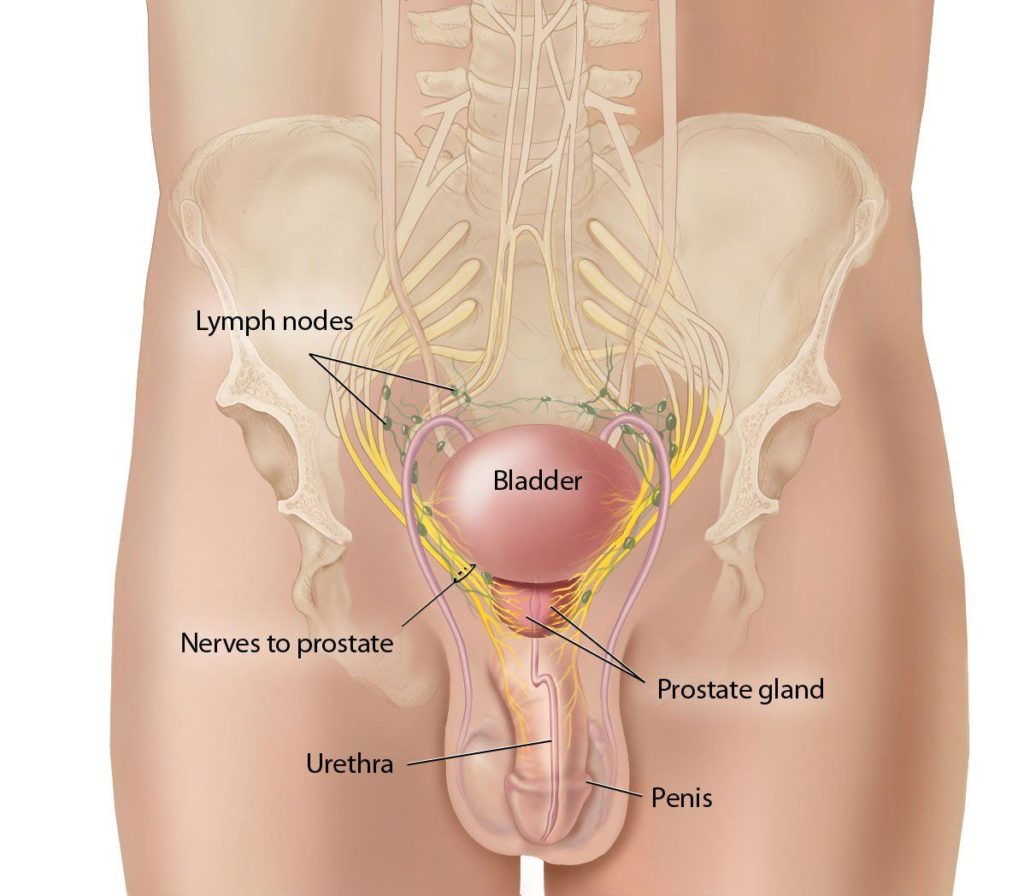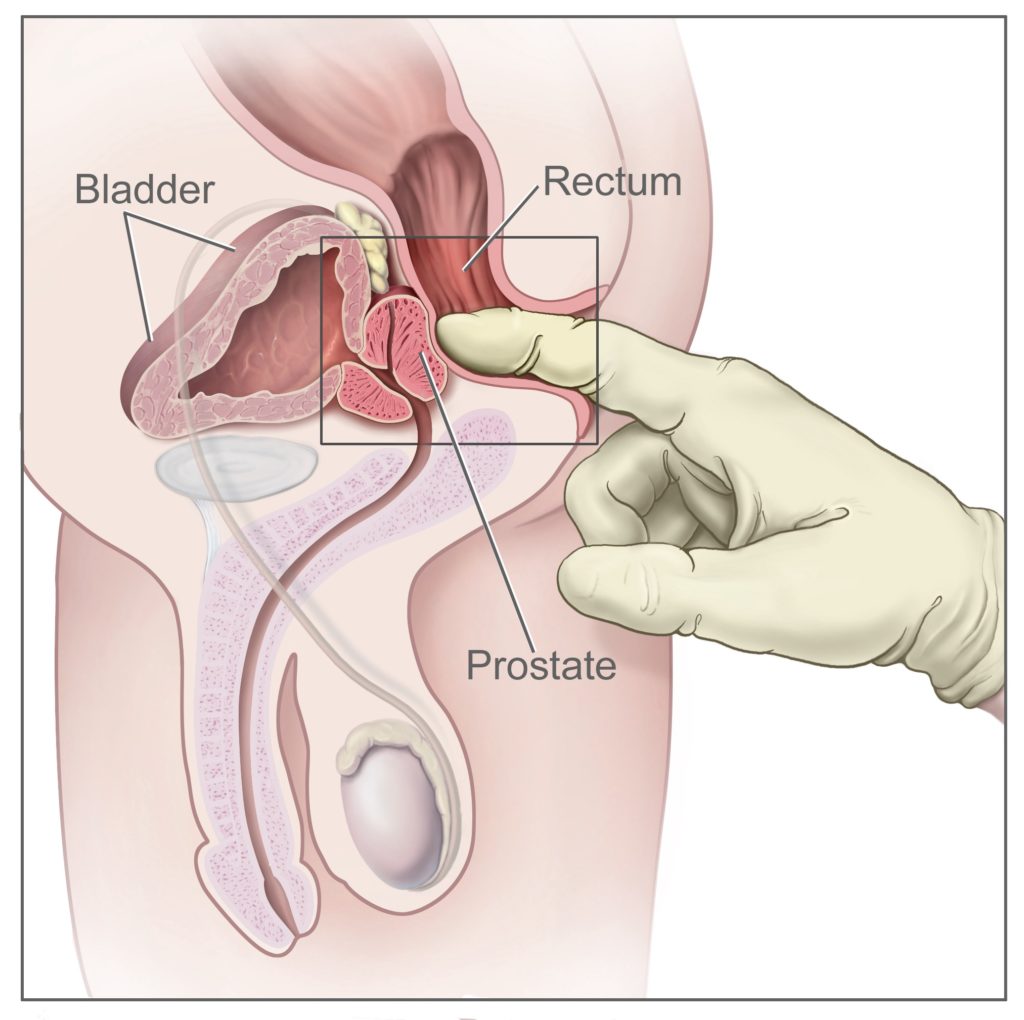What is the Prostate Gland?
The prostate gland is located directly below a male’s bladder. This walnut-shaped gland is small at a male’s birth, but grows significantly during puberty, and enlarges even more as he ages. The prostate is composed of smooth muscle fibers and glandular tissue and is vital to the strength of a male’s sperm. During ejaculation, the prostate contributes fluid to the final composition of semen (these secretions comprise 30% of a male’s ejaculate). The prostate’s secretion is a milky alkaline substance crucial for the sperm’s survival outside of the male body. The alkalinity of the secretion counteracts the acidity of the vaginal canal; resulting pH levels create a suitable environment for the sperm to fertilize a female’s egg.

Prostate Stimulation
Prostate massage and prostate “milking” may lead to a unique type of orgasm. However, the route necessary to reach the prostate is the anus, and for this reason, many people associate prostate stimulation with homosexuality. Nonetheless, both heterosexual and homosexual individuals can enjoy prostate stimulation. For those interested in exploring prostate stimulation, it may be helpful to first read our article about anal intercourse.

The best way to stimulate the prostate is to insert a well-lubricated index finger to the second knuckle inside of the anus and use a “come hither” motion, similar to the way the female G-spot is stimulated. As with the female G-spot, stimulation of the male G-spot may at first feel uncomfortable, but with time, this feeling is often replaced with intense pleasure that is different from a typical orgasm. Additionally, vibrators or even certain dildos made specifically to pleasure the prostate may be of use when stimulating the prostate. The next time that a male wants to experiment with new sensations during partnered intercourse, the prostate may be worth some attention, but make sure to communicate the idea with potential partners first.
Complications
There are three common medical conditions surrounding the prostate. These complications include prostate cancer, prostatitis, and Benign Prostatic Hyperplasia (BPH). Males who experience symptoms related to these conditions may be asked by a doctor to complete a prostate exam to confirm a diagnosis. Remember that professional healthcare providers should be consulted if an individual suspects the presence of one of these conditions, rather than self-diagnosing, since professionals are specifically trained to provide a proper diagnosis and treatment.
Prostate Cancer
The first medical condition related to prostate complications is prostate cancer. According to the American Cancer Society, about 10% of males in the United States will develop prostate cancer at some time in their life, and 40,000 of males die each year from this condition in the U.S. alone. Prostate cancer is the most frequently diagnosed cancer (besides skin cancer) in males living in the United States.
Prostatitis
Another medical issue linked to the prostate is prostatitis. While most cases of prostitis do not have a known cause, oftentimes, untreated sexually transmitted infections (STIs) are the culprit (most frequently gonorrhea and trichomoniasis). Prostatitis may also develop as a result of a bacterial infection similar to the infection of the bladder. Most symptoms of prostatitis are related to urination, including the following: frequent urination, burning urination, difficulty in starting or continuing urination, excessive urination at night, or feeling like the bladder is not completely empty. However, other signs of prostatitis involve pain in the lower back, perineum, lower abdomen, upper thighs, above the pubic area, and/or at tip of the penis. Males with prostatitis may also feel similar pain following ejaculation. Thus, there are many relevant indicators of prostatitis, but having only one or a few symptoms is no reason to be overly alarmed. If a male has several symptoms or feels he may have prostatitis, however, he should consult a doctor who can diagnose the problem. The doctor may prescribe an antibiotic if he or she determines prostatitis is the problem.
Benign Prostatic Hyperplasia (BPH)
The third health problem associated with the prostate is Benign Prostatic Hyperplasia (BPH). BPH simply describes an enlarged prostate, which is very common amongst older males because of varying hormone levels in the body. Besides hormones, the only other scientifically recognized hypothesis about the origin of BPH is rapid cell growth. Contrary to popular belief, masturbation is not a cause of an enlarged prostate. As with prostatitis, symptoms include frequent urination, burning urination, difficulty in starting or continuing urination, excessive urination at night, or feeling like the bladder is not completely empty. These symptoms arise because the enlarged gland exerts more pressure on the urethra (as the prostate surrounds the urethra). An early remedy to BPH, now rarely performed, was the partial removal of the prostate, but this had several negative side effects, such as retrograde ejaculation and erectile problems. Fortunately, new medications and a laser treatment are now available to those who have severe BPH.
In sum, the prostate gland is an essential part of the body that needs to be watched carefully in case of any of the three cited maladies. We encourage you to consult your doctor if you experience any of the symptoms mentioned above or would like to seek more information regarding your prostate health.1
References
- Banschbach, Martin W. “Prostate gland enlargement.” Townsend Letter for Doctors and Patients 274 (May 2006): 82(5).
- Crooks, Robert and Karla Baur. Our Sexuality. Pacific Grove, CA: Wadsworth, 2002. WebMD. 2006. Online Medical Database. 26 Oct 2006.
Last Updated: 10 April 2014.
